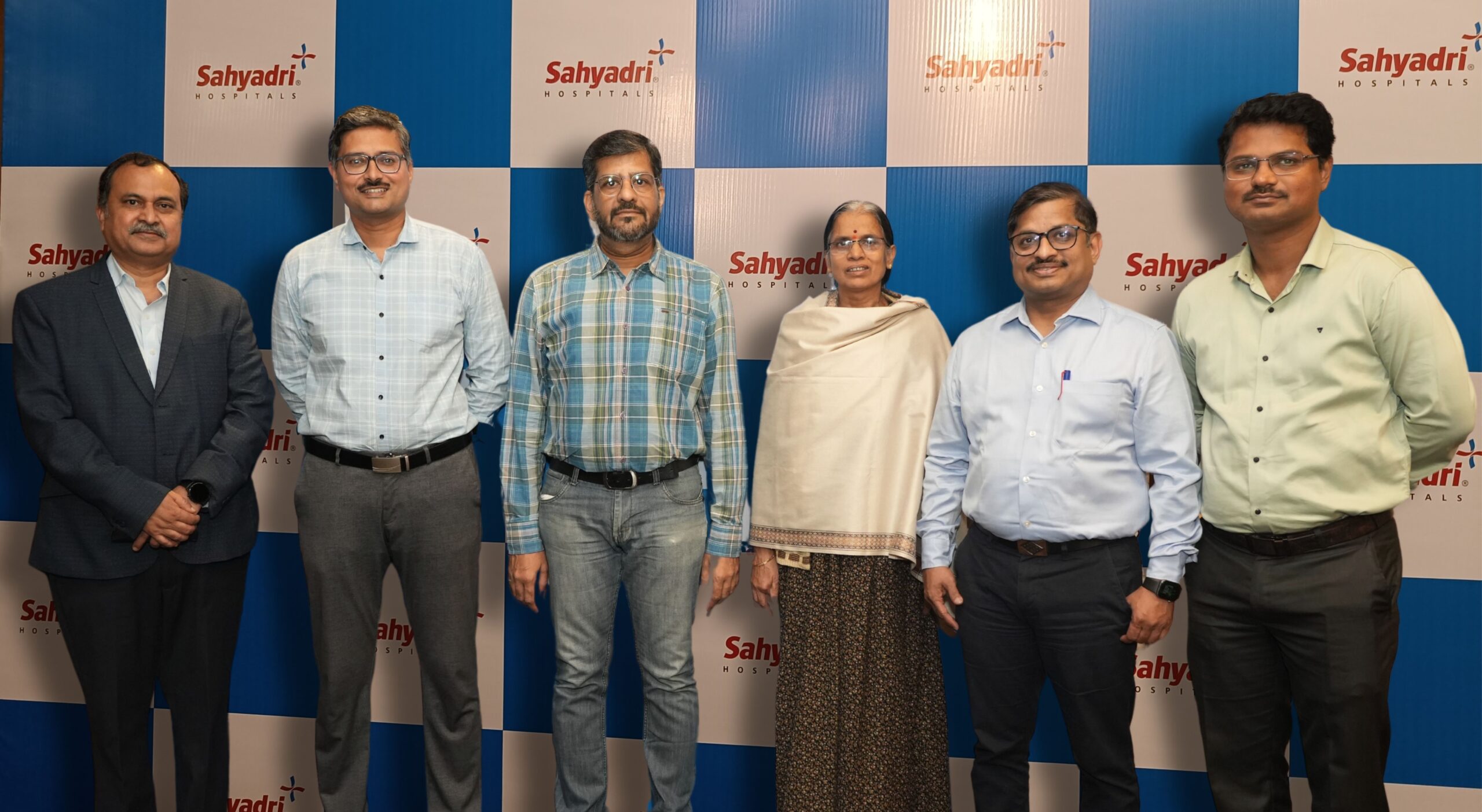
Sahyadri Hospitals Achieves Milestone with Successful rare Frozen Elephant Trunk Surgery
Pune,: In a ground-breaking medical achievement, Sahyadri Hospitals has successfully performed a complex surgical procedure known as the frozen elephant trunk, marking the first time this unique and rare procedure has been conducted at the hospital. The procedure, carried out on a 55-year-old female patient, addressed a chronic aortic dissection that had gone unnoticed for an extended period.
The patient, initially asymptomatic, presented with symptoms only after a thorough examination, revealing a chronic aortic dissection. The dissection had led to a significant dilation of the aorta, reaching almost double its normal size—60 millimetres compared to the typical range of 25 to 30 millimetres. Given the severity of the condition, the medical team, led by Dr. Swapnil Karne, opted for the frozen elephant trunk procedure to replace the ascending aorta and address the proximal descending aorta.
The frozen elephant trunk procedure involves replacing the entire ascending aorta, including the branch vessels supplying blood to the brain. In this specific case, the patient’s entire circulatory system was temporarily halted for approximately 20 minutes while the necessary grafts were implanted. To ensure the patient’s brain received continuous blood supply during this circulatory arrest, an antegrade cerebral perfusion technique was employed. The surgery, which lasted several hours, required meticulous precision and a team of highly skilled specialists. The frozen elephant trunk graft itself, a crucial component of the procedure, comes at a significant cost. However, it provides a durable solution and serves as a platform for potential future interventions, should the need arise.

“Performing intricate surgery demands a meticulous approach, especially when dealing with the delicate intricacies of the brain’s blood supply. In our recent case, we focused on the careful management of bleeding, employing advanced monitoring techniques and cerebral protection measures to prioritize patient safety. The successful post-operative recovery, marked by the absence of neurological issues, underscores the effectiveness of our approach. By ensuring well-controlled bleeding and implementing a comprehensive recovery plan, our patient achieved stability within a remarkably short timeframe of five to six days.” stated Dr Shantanu Shastri, Cardiac Anaesthetist, Sahyadri Super Speciality Hospital, Deccan Gymkhana, Pune
“In addressing a critical emergency where a patient presented with a tear in the main artery of the heart, we successfully performed the frozen elephant trunk procedure. This intricate surgery, resembling an elephant’s trunk, involved replacing the ascending aorta and addressing the descending thoracic aorta, ensuring the patient’s circulatory system remained stable. The collaborative effort of our skilled team, from assessment and surgery to post-operative care, played a pivotal role in achieving a successful outcome, providing the patient with the prospect of a normal life post-recovery.” – Dr. Swapnil Karne, Cardio Thoracic Surgeon, Sahyadri Super Speciality Hospital, Deccan Gymkhana, Pune
Dr. Swapnil Karne, while providing an example of a similar case, mentioned, “In a recent comparable case that we managed, a 62-year-old patient with acute aortic dissection, immediate intervention is crucial. The walls of the aorta were dissected, impacting blood supply to organs in the lower body and brain. Time is of the essence in acute dissection cases, as every minute significantly increases the patient’s mortality risk. Unlike the recent asymptomatic case treated with the frozen elephant trunk, where we replaced the entire ascending aorta, arch of the aorta, and proximal descending aorta with a separate graft, acute dissection involves replacing only the dissected part of the ascending aorta. Recognizing and promptly addressing these conditions are vital for successful outcomes.”
The success of this ground-breaking frozen elephant trunk procedure at Sahyadri Hospitals was made possible by a dedicated and skilled medical team. Led by cardiac surgeon Dr. Swapnil Karne, the team included fellow cardiac surgeon Dr. Sumit Agasty, who played a crucial role in the intricate surgical intervention. Dr. Shantanu Shastri, a seasoned cardiac anaesthesiologist, ensured the patient’s safety and comfort throughout the procedure. Additionally, Mr. Prashant Dhumal, the cardiac perfusionist, expertly managed the circulatory support required for the temporary halt, contributing to the overall success of this unprecedented surgical achievement.
Understanding The frozen elephant trunk (FET): The FET procedure is a complex surgery used for serious cases of aortic dissection. In simple terms, it involves replacing a weakened part of the aorta with a special graft while temporarily stopping blood circulation. This helps maintain blood flow to the brain through branch vessel grafting and protects brain function with antegrade cerebral perfusion. After the surgery, patients are carefully watched for bleeding and recovery. The FET procedure offers a lasting solution and the possibility of additional treatments, making it important for treating complicated aortic conditions. (Please refer to the diagram provided below)


